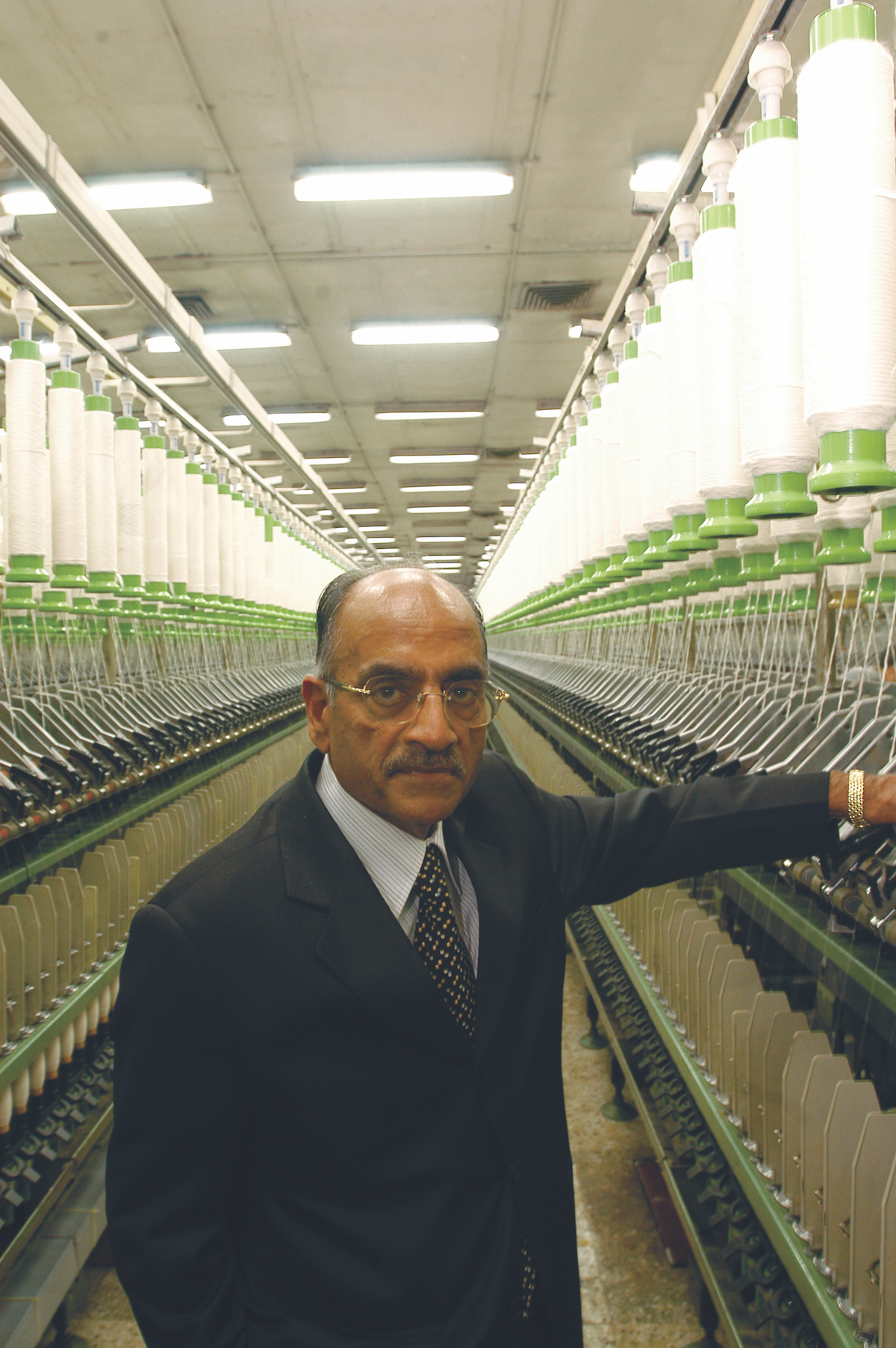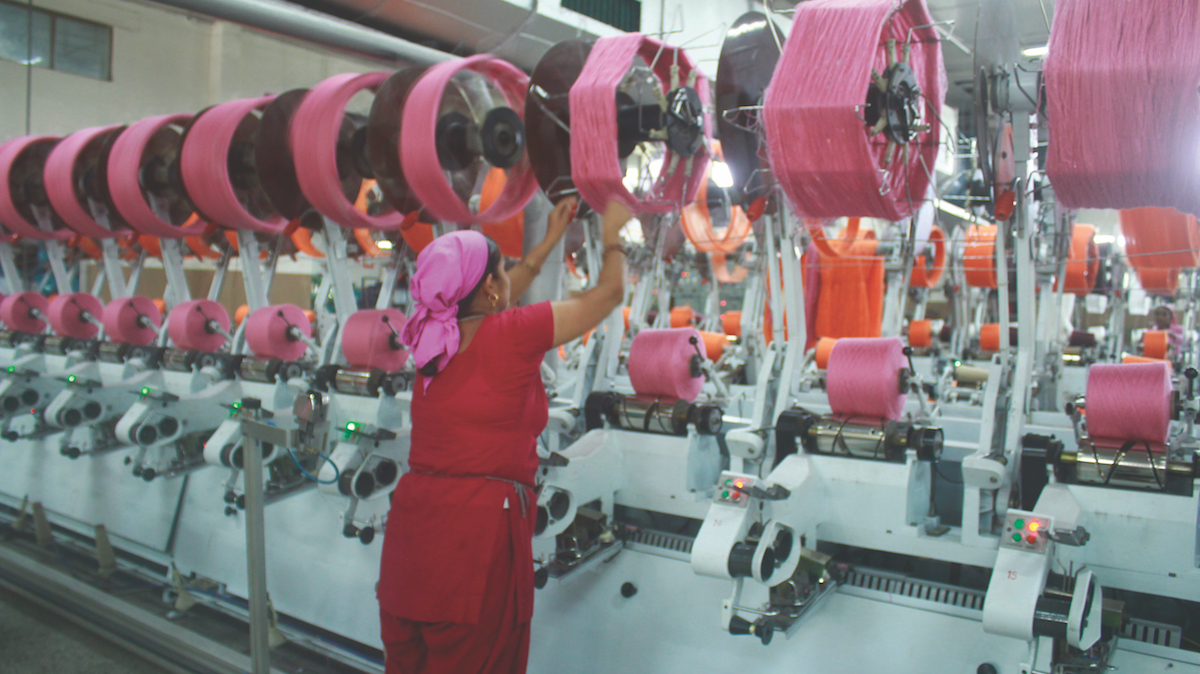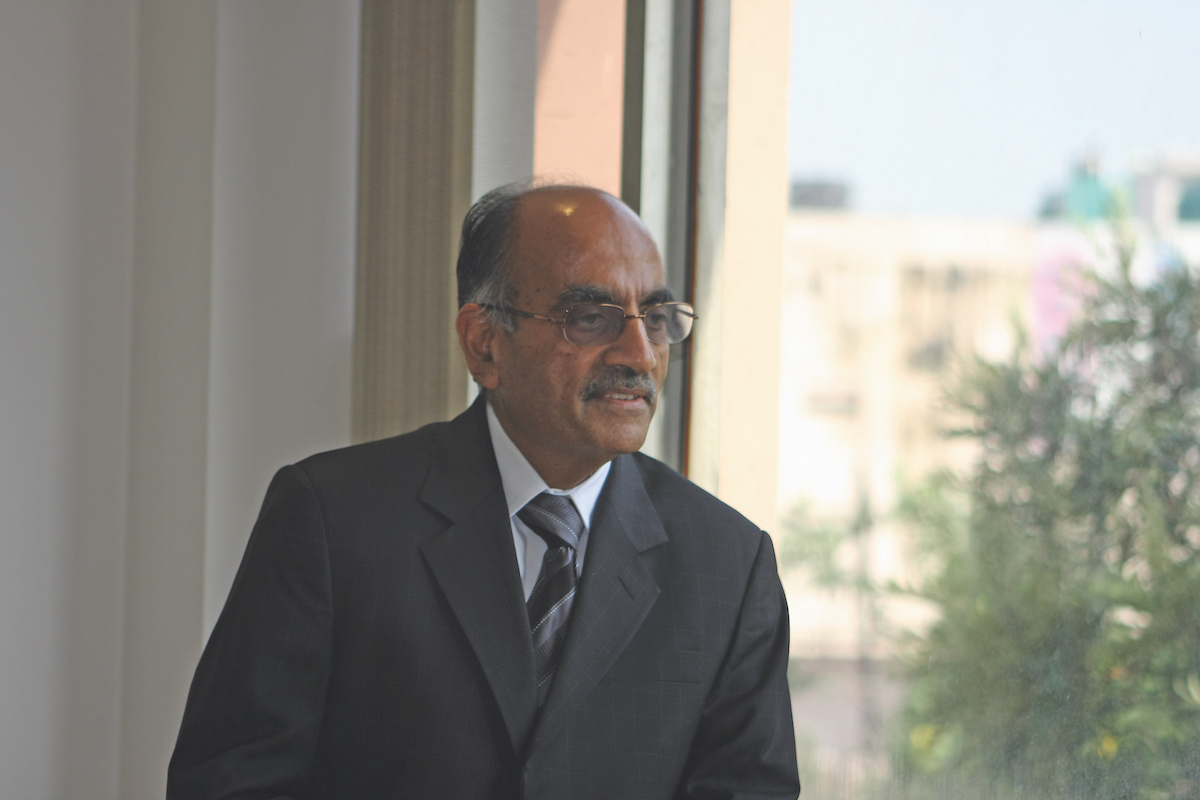As the land of colour and contrast, India owes much of its vibrant culture to its historical and varied textile industry. Home to some of the world’s most beautiful fabrics, with material so rich and diverse in colour and design, the nation’s economy has been built on the back of this sector since the early centuries. Alongside agriculture, with which it is intrinsically linked due to its inclusion of raw materials like cotton, textiles is also one of the largest industries on the subcontinent to have continually generated huge employment for both skilled and unskilled labour. Globally, India represents one of the largest textile manufacturers, being home to 24% of the world’s spindles and 8% of the world’s rotors.
Industry veterans believe that, given the right support, the textiles sector could be one of the biggest success stories to come out of the ‘Make in India’ initiative. It was not long ago, however, that textiles suffered a damaging downturn due to a slew of limiting and back-flipping fiscal policies — with excise duty on garmenting alone levied and removed 3 times over in the past decade. Minimal accessibility to advanced technologies in the 90s and early 2000s also held the industry back, laying the path for ASEAN competitors to overtake India in textiles, despite the nation’s rich history and strong cotton production. Then, after support from new government schemes were implemented via its Ministry of Textiles, the industry took a swing up before plummeting once again in the 2010–11 post-GFC era, when several domestic textile companies ended up on the brink of bankruptcy.
Indian textile giant Vardhman Group managed to escape these downturns relatively unscathed, however — a fact that Group Chairman and Managing Director SP Oswal has credited to the company’s relatively conservative and diversified operational model, producing a mix of yarn, sewing thread, fabric, acrylic fibres, garments and even alloy steel across its cohesive value chain. A business that started in 1965 with few products and 6,000 spindles, Vardhman has grown into one of the largest vertically integrated textile conglomerates in India, valued at US$1.1 billion as of 2015, and growing. Vardhman Textiles Limited reported a rise in net profits of 81.85% for the fiscal 2015–16 to Rs653.05 crore.
Oodles of spindles
Since its inception, Vardhman’s facilities have grown to include more than 1.1 million spindles, 22 production plants across 5 states, and a workforce of 28,000-plus. With these powers combined, the company currently produces impressive proportions of the region’s textile output, including more than 20,000 tons of acrylic fibre per annum, along with weaving more than 180 million metres of fabric. Across its headquarters in Ludhiana and its various factories in Central and Northern India, Vardhman’s spindles yield more than 590 tons of yarn and manufacture more than 43 metric tons of sewing thread per day. As a garment maker, it crafts more than 4,000 shirts each day.

Its continued success through rollercoaster economic conditions has also brought accolades to accompany its success, with Vardhman Group ranked as the second most admired company in the Indian textile industry by Fortune India in 2013, and it stands as one of the few companies in the textile industry rated AA by CRISIL. Reaching this magnitude took great strategic planning, though, with a consistent long-term investment approach. Remarkably, some of the company’s key growth occurred between 2006 and 2014 during a period of global economic turbulence. Over this decade, Vardhman invested Rs3958.75 to enhance the company’s spinning capacity by effectively doubling its 477,920 spindles in 2006 to become 933,331 spindles by 2014, while also expanding its weaving capacity from 432 looms to 1,320.
Its spinning revenues subsequently increased at a compound annual growth rate (CAGR) of 16%, along with a 25% CAGR in its fabric division during fiscal 2006–14, according to the Indian Textile Journal. Vardhman Group has also been a pioneer of the ‘Make in India’ initiative, exporting its wares to 65 countries across the globe, and attracting many leading global fashion chains as key clients. In a 2013 interview with Forbes India, Oswal divulged that brands such as Tommy Hilfiger, Esprit, H&M, Zara, Benetton and Gap, among others, have all got Vardhman on their list of key suppliers. The company was also awarded the Golden Trophy by the Indian Textile Export Promotion Council (Merchant Export Category for Fabrics) for its export performance during the years 1993–94, 2010–11 and 2011–12.
Its strength in exporting meant Vardhman was able to withstand the downturns in textiles that affected many competitors in the region. This was particularly so due to its diversified product offerings beyond cotton, which provided Vardhman the flexibility to reorganise its business to focus on exporting a number of different textiles to foreign buyers. The Group’s relatively large cotton-inventory-holding capacity has allowed it more control to absorb fluctuations in cotton prices.
After near-devastating national market results and many complaints from industry, the cotton exports ban was lifted months later, allowing the sector to grow once again to reach an estimated value of US$108 billion today — expected to reach US$223 billion by 2025. Today the textile industry also remains the second-largest employer, providing jobs for more than 45 million people directly and 60 million people indirectly, contributing approximately 5% to India’s gross domestic product (GDP), 14% to overall Index of Industrial Production (IIP), and 17% to export earnings, according to the India Brand Equity Foundation (IBEF).
Technology upgrades
The unprecedented growth, despite cotton export woes, can be traced in part to a great surge in foreign investment in Indian textiles over the past 6 years, attracting a total of US$1.85 billion between April 2000 and March 2016. The government has officially identified India’s textiles and garments industry as one of the top 25 capable of being a world leader, introducing several export-promotion policies, including permitting 100% foreign direct investment (FDI) in the sector, setting up 12 apparel parks for exports, and even planning roadshows to showcase Indian textiles in non-traditional markets like South America, Russia and West Asia. The Ministry of Textiles has also encouraged foreign investment by ushering in more advanced infrastructure, with schemes such as the Technology Upgradation Fund Scheme (TUFS).
The TUFS initiative was a welcome addition to the industry, with the previously slow adoption rate of modern machinery and technology hindering budgets and productivity, and resulting in a lower-quality output that wasn’t commensurate with consumer preferences. To address growing requirements of speed, information and quality, Vardhman Group was an early investor in the advanced Technology Machine Park, systems and certifications, as well as being the first textile company to become an official member of the Quality Circle Forum of India (QCFI) — the institution representing the Quality Circle Movement in India. Vardhman has also adopted its own productivity mantra across all of its verticals, such as a TPM (Total Productive Maintenance) system.
“TPM is an attitude shift that takes an individual from the ‘I use, you maintain’ to the ‘I use, I maintain’ mindset,” the Vardhman website explains. “The TPM approach is known to bring guaranteed, significant, tangible results to productivity and visible changes to the work environment. Through idea-generation opportunities and exchange, it also raises the skill and knowledge level of the employee.” All signs would indicate that the initiative has been a success, with its workers winning national and international recognition for their ideas, and they have also advised OEMs on design improvements to increase the productivity of their machines. The value of human capital is very high for Vardhman, which sees the ticking of brilliant minds and the development of eager workers as the only real difference and driver of success.

Across its headquarters in Ludhiana and its various factories in Central and Northern India, Vardhman’s spindles will yield more than 590 tons of yarn and manufacture more than 43 metric tons of sewing thread per day.
Progressive design, conservative financing
“In a world where everything else is equal, human effort makes all the difference. We place immense value on our workforce and consider it our biggest, most valuable asset,” Vardhman Group says. “We believe in nurturing and developing our employees through a culture of continuous learning and growth. We foster entrepreneurship through an open communication system that flows top-down within the organisation.” The Vardhman Group has also evolved a culture of developing young talent into leaders. Innovation has consistently been a key focus for the Group, which annually launches many new fabric and yarn products, from its revered design studios, research and product development centres. The design team also collaborates with the International Design Consortium to monitor upcoming fashion trends and seasonal needs.
“We experiment with textures, fibres and patterns to bring an exciting range of designs that are then adopted by leading fashion houses globally for their collections,” the Vardhman website reads. “Our extensive collaborations with the best technology providers in the world and in-house technical teams are instrumental in helping us stay a step ahead of the market at all times.” Complementing its ability to continually develop new and fresh product capacity are the Group’s conservative financing tactics. To sustain Vardhman’s market growth, Oswal has consistently reiterated the benefit of relying on conservative financial decisions that maintain excellent quality in the long term, despite how ‘unfashionable’ it may seem.
“This simplified approach has helped us prioritise investments and initiatives leading to business predictability. The result is that the company has continuously expanded spinning and weaving capacities without stretching its financials,” he told the Indian Textile Journal in 2014. The conservative approach has worked well for the Group’s geographical expansion. Each new region considered for expansion must first have a demonstrated suitability for long-term growth. This suitability is based on the analysis of the country’s existing textile resources, consumption patterns, varietal preferences, and population growth to ensure its revenue potential would continually grow over time. Its market penetration into Japan in
the late 80s, for instance, addressed a consistent and growing demand of good quality yarn and high-end niche fabrics, and has now become Vardhman’s third-largest market.

Innovation, quality & sustainability at home
India remains a key focus for the business, however, with its thread business made almost entirely for the domestic market. Aside from just business operations, Vardhman has been involved in several programs to promote innovation, quality and sustainability on its home turf. The Vardhman Village Adoption Program saw the state of Punjab’s cotton yields grow back to viable levels after crop devastation and shrinking cotton yield drove a dramatic drop in 2001. Oswal partnered with the Punjab Agricultural University to undertake studies of the varying techniques and conditions that led some farmers to have greater yields than others in one village. Once ideal circumstances were identified, the program provided the farmers with advances in cultivation techniques and support such as soil testing, water and fertiliser management. At the end of the season, that first village had a 60% higher yield than the overall state average.
Over time, the program grew to cover 95 villages, and saw Oswal awarded the prestigious Padam Bhushan in trade and industry in 2010. “Farmers had lost interest in cotton cultivation due to huge losses they used to suffer. Their crop was getting damaged due to repeated pest attacks. Being a yarn manufacturer, it was my duty to guide the farmers because cotton was the entire textile industry’s raw material,” Oswal told The Indian Express in 2010.

Vardhman’s chairman is inspired by the philosophy and writings of Sri Aurobindo and The Mother. He has set up a trust by the name of Sri Aurobindo Socio Economic and Management Research Institute, and under this trust he has set up Sri Aurobindo College of Commerce & Management (affiliated to Panjab University) with the mission to create an institution dedicated to the ideals of creating disciplined and career-oriented young people and preparing them for administrative and management roles in enterprises or to set up their own business as entrepreneurs. The college has in a short span of time become one of the most sought-after institutions for its commerce and management courses. Oswal has also set up 2 schools: one in Baddi, Himachal Pradesh, and another at Budhni, Madhya Pradesh. The Budhni school is situated in the remote area of Madhya Pradesh, which is creating opportunities for the local citizens to provide good education to their children.
An industrialist with almost 50 years of experience in the textiles industry, the Vardhman Group claims that it is due to Oswal’s leadership, vision and insight that the Group has woven itself an enviable position in the sector, and has efficiently used its resources to innovate, diversify, integrate and build its diverse operations into a dynamic and modern enterprise.



